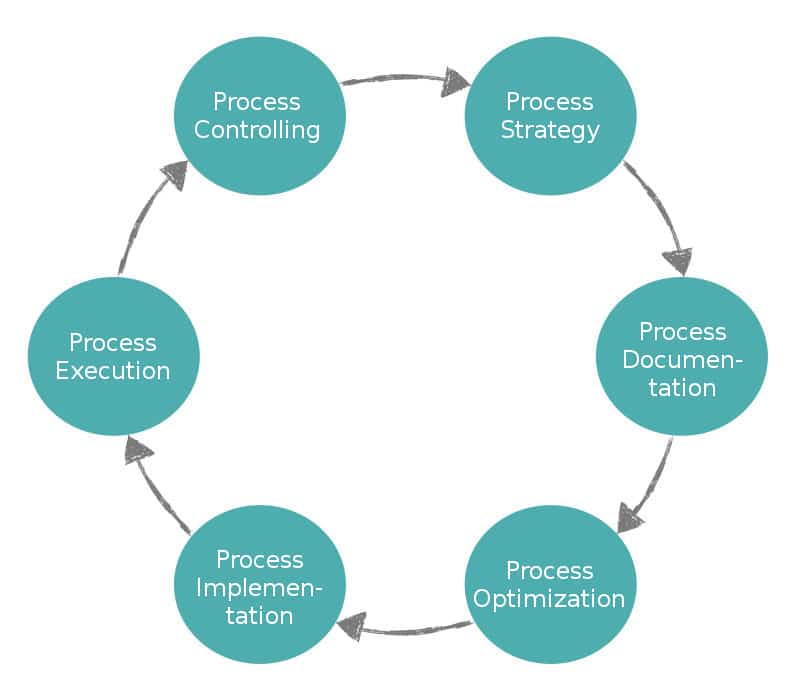Process life cycle shows the stages that a physical process or a management system goes through as it proceeds from birth to death. These stages include conception, design, deployment, acquisition, operation, maintenance, decommissioning, and disposal.
The process management lifecycle is a model for the continuous implementation and improvement of processes and business process management in a company. The process management lifecycle represents a structured procedure for the management and improvement of processes, making process management easier overall. It ensures the right people know what has to be done in each phase and what’s coming next. In addition, the cycle is helpful for a company just starting to use strategic, systematic process management, as it clearly lays out all the necessary steps.
Relationship between Process and Product Life Cycle
- When an output is just introduced, it is made in small volumes in an inefficient, uncoordinated manner which might start using the project form.
- However, very soon it is produced in small batches using the intermittent processing form.
- As the output goes through the growth phase, more and more sub-processes are designed using the continuous flow processing form.
- Finally, in the maturity phase, the product competes mostly on price. The volumes are high and highly cost efficient methods are required to produce the product at a low cost. The continuous flow processing form is then the most suitable form of process

Comments
Post a Comment